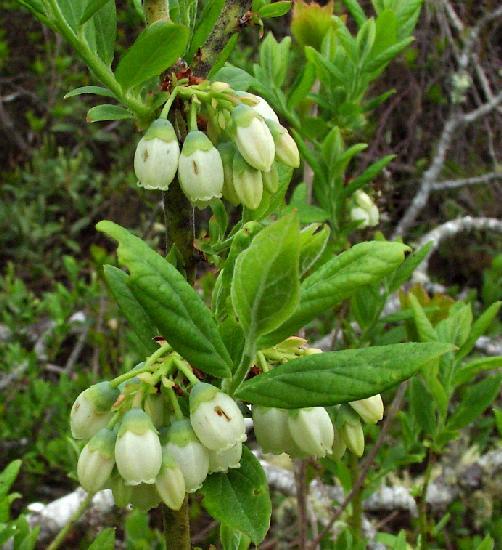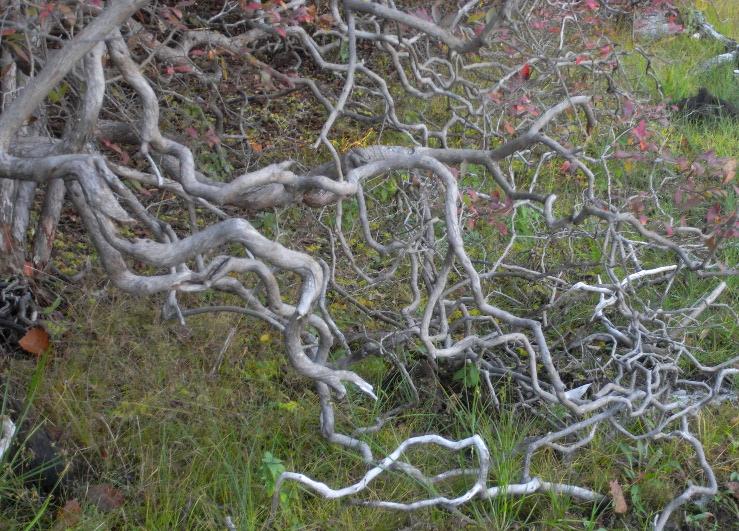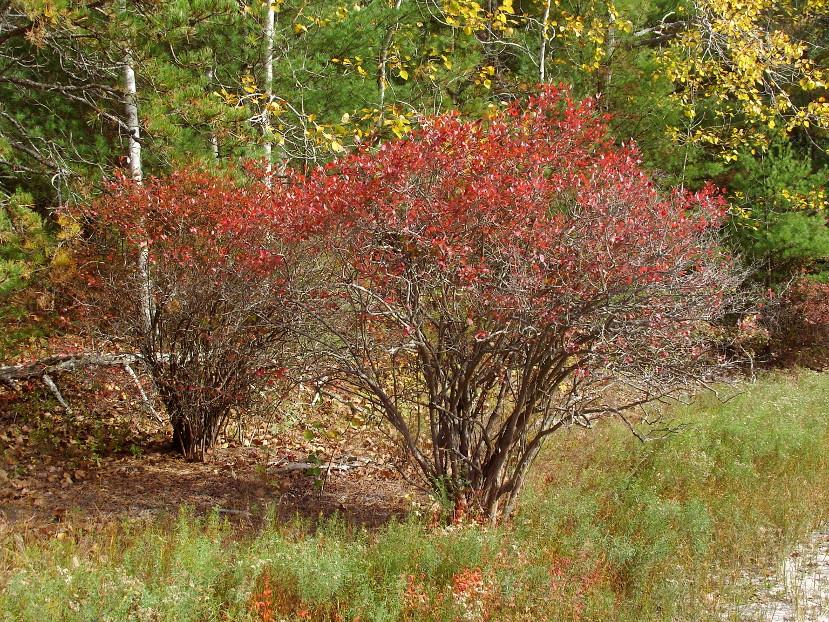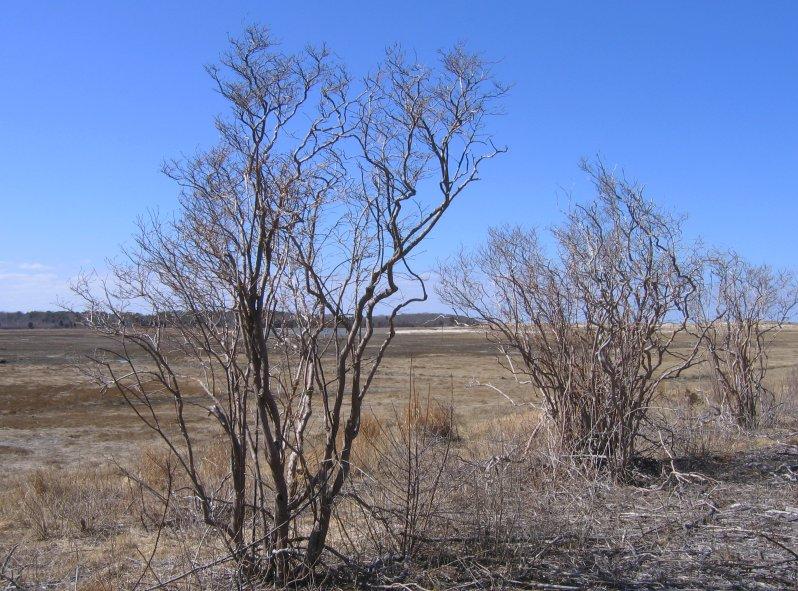Highbush Blueberry
Vaccinium corymbosum
A large deciduous shrub of eastern North America, highbush blueberry has an enormous range from Nova Scotia and Ontario south
all the way to Florida and Alabama and west to Wisconsin. While various wetlands, such as swamps, bogs, margins of ponds and
saltmarshes, and river banks are the prime habitat for highbush blueberry, this amazing plant is not shy of growing in pine
barrens, upland woods, and can even reach mountain summits, climbing up to 1,600 m. Plants are to 6 ft tall, of characteristic
"fountain" form, their bark exfoliating in thin layers. Old shrubs at sunny margins of ponds often become gnarled. The leaves
are to 2" long (rather large, as compared to other blueberries), turning a brilliant red and purple in the fall. The white
bell-shaped flowers open in May, but the fruit, the delicious dark blue berry so familiar to all of us, matures only by August.
Highbush blueberry was domesticated only a hundred years ago, its first commercial crop sold in NJ in 1916. It is now introduced
to Europe, East Asia, and New Zealand. Not only us, humans, but many birds, especially catbirds, scarlet tanagers, and thrushes
relish the juicy fruit. Bears make blueberries a major part of their diet during the harvesting season.

Flowering, May 16, Plymouth

A gnarled highbush blueberry, Fearing Pond, Myles Standish SF

Highbush blueberries, New Long Pond, Myles Standish SF, mid-October.

Highbush blueberries at saltmarsh margin, Wing Island, Brewster, March 18